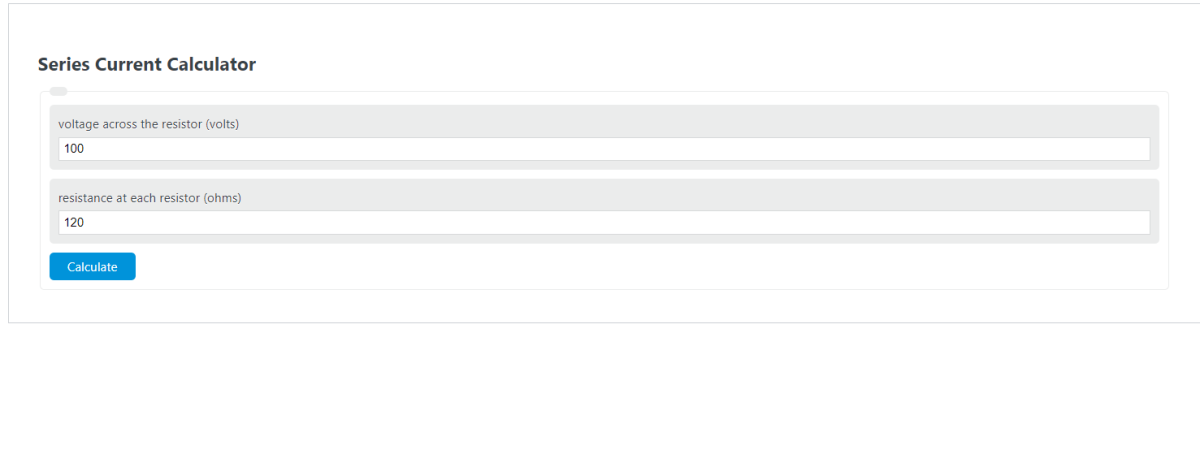Enter the voltage across the resistor (volts) and the resistance at each resistor (ohms) into the calculator to determine the Series Current. In a series circuit, the current is constant across every component.
- All Electrical Calculators
- Series Voltage Calculator
- Series Resistance Calculator
- RLC Circuit Calculator (Solve for Frequency)
- Parallel Current Calculator
- Total Current Calculator
- Branch Current Calculator
- Current Density to Current Conversion Calculator
Series Current Formula
The following formula is used to calculate the Series Current.
Is = Vs / Rs
- Where Is is the Series Current (amps)
- Vs is the voltage across the resistor (volts)
- Rs is the resistance at each resistor (ohms)
To calculate the series current, divide the series voltage by the series resistance.
How to Calculate Series Current?
The following two example problems outline how to calculate the Series Current.
Example Problem #1:
- First, determine the voltage across the resistor (volts). In this example, the voltage across the resistor (volts) is measured to be 50.
- Next, determine the resistance at each resistor (ohms). For this problem, the resistance at each resistor (ohms) is calculated to be 45.
- Finally, calculate the Series Current using the formula above:
Is = Vs / Rs
Inserting the values from above and solving the equation with the imputed values gives:
Is = 50 / 45 = 1.111 (volts)
Example Problem #2:
Using the same process as example problem 1, we first define the variables outlined by the formula. In this case, the values are:
voltage across the resistor (volts) = 400
resistance at each resistor (ohms) = 12
Entering these values into the formula above gives :
Is = Vs / Rs = 33.33 (volts)
